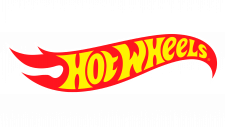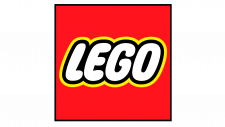Snap-on Logo
Snap-on Incorporated is a leading global innovator, manufacturer, and marketer of tools, equipment, diagnostics, repair information, and systems solutions for professional users. Specializing in automotive, aviation, and industrial sectors, it delivers high-quality products and services worldwide. Its prominent market presence is fortified by its commitment to unparalleled quality and customer satisfaction. Publicly traded on the NYSE as SNA, it’s owned by a myriad of shareholders, with its management overseen by a proficient board ensuring operational excellence and strategic growth in its diverse markets.
Meaning and history
Founded in 1920, Snap-on has experienced transformative growth and diversification. Initially known for its socket wrenches, the company innovated by creating interchangeable sockets and wrench handles, offering enhanced tool flexibility. Over the decades, strategic acquisitions and product diversifications have been pivotal in its evolution. Snap-on’s product line extended beyond hand tools to include diagnostic equipment and solutions, illustrating its adaptation to market demands. It further cemented its industry footprint by venturing into software, emphasizing diagnostic and business solutions. Publicly traded as SNA, its ownership has diversified with varied shareholders, fostering resilient growth and diversified operational developments across its historical journey. The strategic milestones achieved by Snap-on underscore its commitment to innovation, quality, and responsiveness to the dynamically changing needs of professional users worldwide.
1920 – 1944
The inaugural logo of Snap-on was fundamentally minimalistic, consisting exclusively of the brand’s moniker, set against a pristine white canvas. The encompassed text was delineated in a rich, dark red shade, resembling the color of wine, and presented in lowercase, accentuated by an underline. However, this linear accentuation was not seamless; it experienced a disruption beneath the letter “p.” The serifs were minute and angular, their placement deviating, inclined rather than direct. The lone uppercase letter in this design was “S,” which extended below the alignment of the adjacent characters and exceeded the linear boundary.
This emblematic design signified the company’s nascent phase, depicting a simplistic yet distinct visual identity. The angular serifs and the pronounced “S” became characteristic elements, setting a unique tone for the brand’s representation. The intentional interruption in the underline and the angular displacement of the serifs played pivotal roles in accentuating the logo’s uniqueness and emphasized the brand’s attention to detail and precision. The logo’s color palette, dominated by the wine-hued inscription on a white backdrop, marked the beginning of Snap-on’s journey, laying down the foundational aesthetics that would undergo transformations yet continue to resonate with the core identity of the brand. The variance in the positioning and casing of the “S” further contributed to the distinctive and memorable presence of the logo in the consumer’s mind.
1944 – 1948
The subsequent rendition is characterized by italicized lettering, resembling a handwritten style, granting every character a fluid, rounded, and calligraphic appearance. The creators introduced an innovative element: a dark red rectangular backdrop, hosting the brand’s title, manifested in white. The underlining element has evolved to extend from the terminal letter of “Snap-on,” traversing the entire span of the designation. A notable deviation is the “S”: it’s manifested as an enlarged element and is positioned distinctly from the remaining characters.
This modification represented a harmonious blend of classic and contemporary, the handwritten essence conveying a sense of personal touch and authenticity. The innovative incorporation of the rectangular element in dark red, contrasting sharply with the white inscription, accentuated the visual impact, ensuring brand recall. The underlining feature, extending fluidly from the last letter, offered a sense of continuity and coherence, reflecting the brand’s evolving identity. The deliberate isolation and enlargement of “S” served as a focal point, enhancing the distinctive nature of the design. The amalgamation of these elements and nuances encapsulated the brand’s ethos, rendering it more relatable and visually appealing to the observer. The harmony between innovation and tradition in this version illustrated the brand’s adaptability and commitment to maintaining its unique identity amidst evolution.
1948 – 1953
The designers opted for a transformation in typography while maintaining the consistent presence of the horizontal red rectangle. Consequently, the inscription’s aesthetic evolved to embody a more mechanical appeal—being pronounced, linear, angular, and possessing a distinct sharpness. The character “S” has adopted a retroflex positioning, and reminiscent of the inaugural version, the underline encounters an interruption at the stem of “p.” Herein, the underline manifests as a distinct entity, separate from the textual elements. The characters are depicted in boldface.
This adjustment in design infused the logo with a sense of precision and technological flair, the angular and sharp features echoing a contemporary and structured essence. The boldness of the characters serves to emphasize the brand’s robust identity, while the backward slant of “S” and the discrete underline introduce elements of dynamicity and subtlety. The continuity of the red rectangle pays homage to the brand’s historical aesthetic, creating a harmonious blend of tradition and modernity. This intricate interplay of elements collaboratively projects a refined and progressive visual identity, aligning with the evolving contemporary tastes and maintaining the brand’s foundational ethos. The meticulous integration of these design components articulates the brand’s adaptability and its unwavering commitment to innovation and distinctiveness.
1953 – 1981
With the incorporation of the term “Tools” into the company’s moniker, a comprehensive logo revamp was necessitated. Initially, a notable transformation was rendered through a shift in color scheme, adopting a red hue for the text. Subsequently, the iconic rectangle was discarded, and a distinctive font was introduced. The characters “T” and “S” are manifested in uppercase, juxtaposed with the remaining in lowercase. The inscription’s design mimics handwriting, albeit without a pronounced inclination; a subtle slant is retained, albeit less conspicuous than in preceding versions. The integration of an additional word warranted the introduction of a second underline.
The redesign signaled a shift in visual identity, intertwining modern aesthetics with subtle nods to its heritage, reflected in the nuanced handwritten style and the discreetly sloped characters. This modification not only exemplified the brand’s evolutionary journey but also highlighted its adaptability, balancing modernity and tradition. The deliberate emphasis on specific characters, coupled with the meticulous color selection, contributed to a renewed sense of brand identity. The refined representation of elements demonstrated a cohesive fusion of redesigned components, manifesting a visual coherence and a renewed emphasis on the brand’s expanding repertoire, symbolized by the addition of “Tools” and the accompanying underlines. The nuanced alterations in this redesign serve to encapsulate the brand’s enduring essence while accommodating its evolving identity.
1981 – 1995
Once more, the Snap-on emblem is graced with a background rectangle, this time in a rich burgundy shade. The typography undergoes a metamorphosis, evolving into white, geometric forms, accentuated with crisp, sharp serifs. A notable deviation this time is the orientation of the serifs; they align in a horizontal fashion, contrasting the “S,” adorned with vertical serifs. Further embellishing the “S” is a meticulously illustrated wrench at its base. Predominantly, the characters embrace a squared structure. Both “a” and “o” manifest with an unconventional open contour.
This rendition of the logo speaks volumes about the brand’s attention to detail and its propensity for innovativeness. The harmonious juxtaposition of geometric letters against the rich burgundy rectangle underscores the brand’s commitment to aesthetic refinement and precision. The inclusion of the detailed wrench symbol on the “S” subtly echoes the company’s industrial roots, offering a visual reminder of its foundational ethos. Each character, from its shape to its serif, is meticulously crafted, reflecting an amalgamation of symmetry, sharpness, and openness, creating a seamless visual flow. This iteration not only serves as a representation of the brand’s identity but also as a testament to its evolving aesthetic vision, balancing modernity with elements of its rich heritage. The overall design intricacy mirrors Snap-on’s dedication to excellence and innovation in its field.
1995 – Today
The contemporary emblem solely encompasses the brand name, set against a pristine white backdrop, eschewing the previously used rectangle. The alphabetic characters are now imbued with a vibrant red hue. Rendered with a technical flair, the glyphs are substantial, emphatic, and exhibit a cubic form. They bear a subtle inclination towards the right. Notably, the dash uniting “Snap” and “on” merges seamlessly with the “o,” appearing as an integral component of the letter. While serifs are incorporated, their truncated form renders them practically imperceptible. In this design evolution, the creative minds have thoughtfully retained the wrench element, nestling it within the negative expanse at the “S” base.
This advanced representation illuminates the brand’s adaptability, manifesting a refreshing simplicity while maintaining a connection with its industrious roots through the nuanced inclusion of the wrench. The meticulous juxtaposition of bold, red letters against a pure white domain encapsulates the brand’s relentless pursuit of precision and aesthetic excellence. The innovative integration of the hyphen resonates with the brand’s commitment to seamless design and functional elegance. Each element, from the invisible serifs to the strategically placed wrench, is a testament to Snap-on’s evolving visual identity, harmoniously blending modern design principles with symbolic elements, thereby conveying a narrative of progress, reliability, and technological proficiency in the realm of tool manufacturing.

















